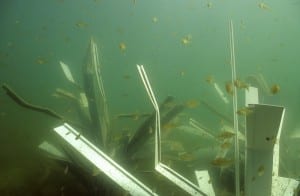Updated GLWQA signed in Washington DC, September 7, 2012
By Mary Muter, Chair Sierra Club Canada Great Lakes Section
After 25 years the governments of Canada and the United States have finally come together on the terms of a new revised Great Lakes Water Quality Agreement (online here) that better reflects the current conditions of the Great Lakes than the 1987 Agreement. This new Agreement has three new Annexes – Aquatic Invasive Species, Habitat and Species and Climate Change Impacts – that will be able to take advantage of the increased knowledge on these important issues. The question is: will there be funding and resources to address the new challenges facing the Great Lakes when existing Areas Of Concern like Toronto and Detroit continue to show little sign of improvement? Dozens of unique habitat models at fishiding.com
Sierra Club applauds the governments’ commitment to prevent further loss of habitat and species that contribute to the protection of Great Lakes water quality. Those high quality coastal wetlands still intact on the Great Lakes would have to be at the top of the list needing protection. We have already lost 70% of coastal wetlands on Lakes Ontario and Erie due to pollution and/or development. Great Lakes wetlands are needed by about 80% of Great Lakes fish for spawning and or nursery habitat. If Great Lakes fish cannot find suitable spawning habitat they simply do not spawn. The Ontario Ministry of Natural Resources has already identified declining Northern Pike and Musky populations due to 13 years of sustained low water levels and loss of wetland habitat on Lakes Huron and Georgian Bay. We will be watching to see if the development and implementation of lakewide habitat and species protection, restoration, and conservation strategies will be met in their two year stated objective. Another critical issue will be whether individual targets or goals can be established for each Great Lake that reflect background conditions.
Will there be enough resources to meet these lofty objectives? It is hard to believe these objectives can be met while the Government of Canada has eliminated hundreds of science positions including closing the Experimental Lakes Project – the research station where Dr. David Schindler’s internationally respected ground-breaking research to identify phosphorus as the leading cause of algal growth. Where would we be today without that critical knowledge?
We need strengthened legislation not the weakened sections of the Fisheries Act by the removal of fish habitat. This one action alone has left thousands of un-assessed coastal wetlands now vulnerable to encroachment or degradation due to development.
Sierra Club hopes the new Agreement will better protect and restore the Great Lakes. To accomplish that our governments in Canada and the United States will need to involve the public at a very high level to ensure accountability and progress. We have a very valuable bi-national resource in the Great Lakes; to protect and restore them we require the best possible public and government actions along with the required resources. Only then will the obligations under this Agreement be fulfilled.

